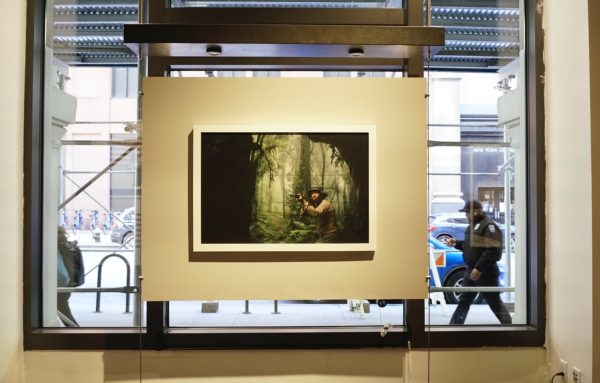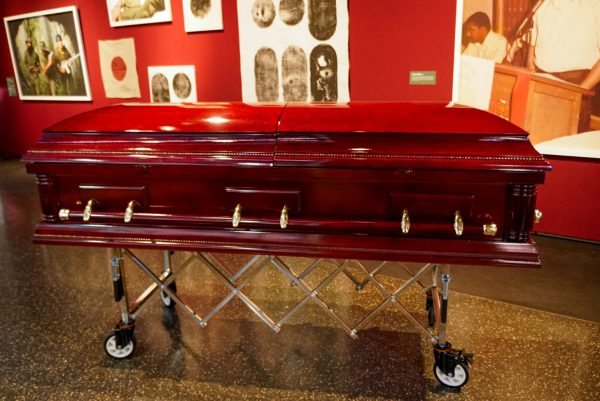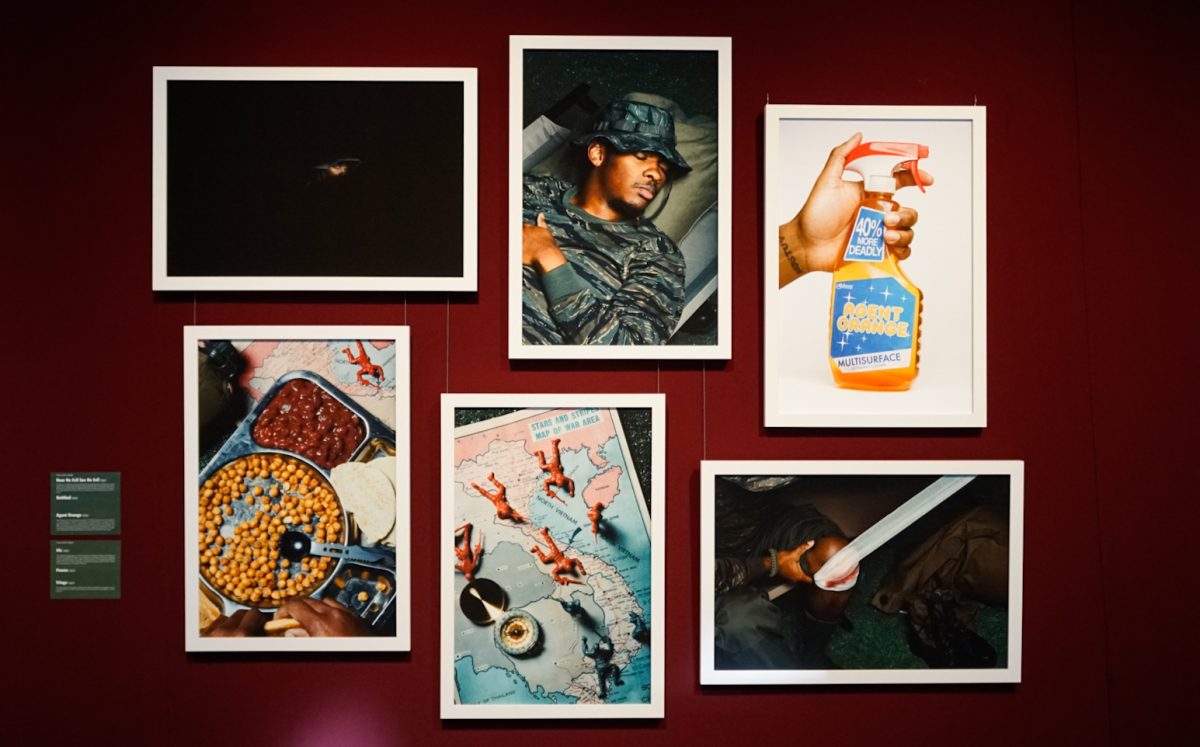Brooklyn-based street artist Khidr Joseph’s photograph “Family Heirloom” depicts an extended hand with a military dog tag hanging from its fingers. The large scale and intense focus allow viewers to observe every crease of the palm, the scuffs of the tag and the raised ink of a tattoo. The photograph is reflective of Joseph’s exhibition, “In Loving Memory,” as a whole. It’s honest and human — an examination both of an individual and a broader wartime history that insists on remembrance.
From the Bedford-Stuyvesant neighborhood in Brooklyn, Joseph has spent the last four years connecting with his community in the form of public art. “In Loving Memory” is Joseph’s first solo exhibition, a personal rumination on his family history and the larger issues of incarceration and addiction that impact veterans. His past projects include photography and wheatpaste campaigns, one of which gained 13 million views on Instagram in just a week.
Situated within NYU’s Gallatin Galleries— the exhibition space in the Gallatin School of Individualized Study — commemorates Joseph’s grandfather, Jerome Cleveland Hilton, who enlisted in the Vietnam War in 1967. Hilton enlisted with the intent of locating the spot of his uncle’s death a year prior, who had been killed in service by members of his own platoon. After being hit by a stray bullet shard, Hilton was pronounced dead, only to awaken from a coma while being transported back to the United States. Hilton’s post-war life was impacted by addiction and post-traumatic stress disorder, culminating in his arrest for armed robbery five years following his release.

The majority of the exhibition is suspended on a cherry-red wall, a shade matching the polished wood of a casket placed prominently in the center of the gallery. Visitors can sit on a pew-like bench beside the casket and view“Jerome Hilton,” a portrait of Joseph’s grandfather placed on the wall behind. The view situates Hilton’s likeness at the head of the casket, creating the sensation that he is poised to speak at his own funeral. Hilton is undeniably alive within the artwork, often represented in likeness by Joseph himself.
The photograph “Brothers in Arms” shows Joseph poised for combat beside two of his close friends, a scene indicative of the inherently shared experience of wartime. In the corresponding label, Joseph asserts the significance of working alongside close peers for the piece, representing both his grandfather’s platoon mates and “[his] brothers in the present day.”
Joseph utilizes a series of motifs across his pieces. Many portraits feature the use of a ghillie suit, a form of camouflage typically used by wartime snipers. The subject of the photograph “Resurrection” emerges from a casket — the same cherry casket featured in the gallery — dressed in a ghillie suit. Designed to mimic the grasses of Vietnam’s landscape, the suit is emblematic of his grandfather’s enduring wartime trauma — an experience that is shared by many other veterans.

Likewise, day-to-day imagery takes on more sinister connotations across Joseph’s pieces. “Agent Orange” captures a hand holding a spray bottle labeled with the name of the chemical notably used to cut through foliage in Vietnam. Notorious for the environmental damage and health defects it caused, the bottle is created to look as unassuming as a cleaning product, a critique of its commonplace appearance and accessibility. Pieces such as “Agent Orange” hail back to Joseph’s wheatpaste campaigns, utilizing artwork as a vehicle for social commentary and critique.
For Joseph, the exhibition was an opportunity to assert the omniscience of history and to dissect and embody his grandfather’s tale while also reconnecting his family to his memory. On the label beside his grandfather’s portrait, Joseph notes the distance between his family and his grandfather, both in life and postmortem, and his own desire to honor his existence: “This show is sort of the funeral he never had.”
Khidr Joseph will be leading a discussion within Gallatin Galleries on Feb. 15 at 6:30 p.m. “In Loving Memory” will be on display until Feb. 29.
Contact Eleanor Jacobs at [email protected].























































































































































